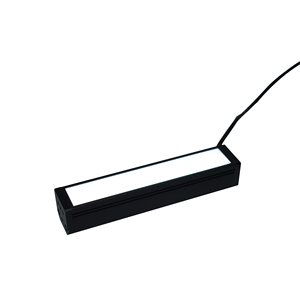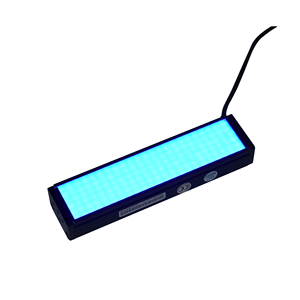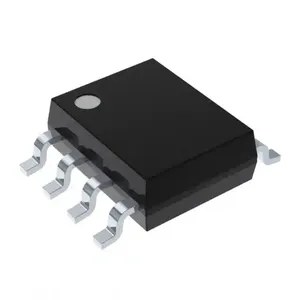Types of BRT LED Technology
BRT LED (Bus Rapid Transit Light-Emitting Diode) technology represents a significant advancement in transit lighting systems. These specialized LEDs are designed to enhance visibility, safety, and energy efficiency in modern bus rapid transit systems, which feature dedicated lanes and priority traffic signals to improve public transportation efficiency.
Did you know? BRT LED technology can reduce energy consumption by up to 80% compared to traditional lighting systems while providing superior illumination quality.
Front BRT LED Lights
Installed at the front of BRT buses, these powerful LED lights illuminate the road ahead, significantly improving visibility during night driving and in low-light conditions.
Key feature: Variable brightness levels and customizable beam patterns for different driving environments
BRT LED Display Lights
Located on the front and sides of buses, these information display lights provide real-time data to passengers about routes, upcoming stations, and important announcements.
Key feature: High contrast visibility in all lighting conditions with minimal power consumption
BRT LED Strip Lights
These versatile lights are installed both inside and outside the vehicle, serving both decorative and functional purposes to enhance visibility and create comfortable interior lighting.
Key feature: Flexible installation options with waterproof designs for exterior applications
BRT LED Signal Lights
Critical for safety, these lights include turn signals, brake lights, and auxiliary indicators that communicate the bus's movements to other road users.
Key feature: Exceptionally bright output with rapid activation for improved reaction times
| BRT LED Type | Primary Function | Typical Location | Key Benefits |
|---|---|---|---|
| Front LED Lights | Road illumination | Vehicle front | Enhanced night visibility, reduced driver fatigue |
| LED Display Lights | Passenger information | Front & sides | Improved communication, better passenger experience |
| LED Strip Lights | Visibility & aesthetics | Interior & exterior | Enhanced safety, improved vehicle appearance |
| LED Signal Lights | Vehicle communication | Front, sides & rear | Faster activation, clearer signaling to other road users |
Specifications and Maintenance of BRT LED
BRT LED lighting systems are designed to meet the rigorous demands of public transportation with precise technical specifications that ensure optimal performance and durability.
Technical Specifications
-
Lumen Output
BRT LED headlights produce 3,000-10,000+ lumens, while taillights typically range from 1,000-5,000 lumens, providing exceptional visibility in all conditions.
-
Color Temperature
Operating in the 5,000K-6,500K range, these LEDs produce daylight-like illumination that improves visibility without causing eye strain during extended operation.
-
Beam Pattern
Engineered with advanced lens technology to create wide, uniform beam patterns that maximize visibility range and field of view for improved safety.
-
Voltage Requirements
Compatible with standard 12V-24V vehicle electrical systems, ensuring easy integration with existing BRT infrastructure without special adapters.
-
Energy Efficiency (Wattage)
Interior lights: 10-50W
Exterior lights: 50-100W
Signal lights: 20-80W
Significantly lower power consumption compared to traditional lighting technologies. -
Color Rendering Index (CRI)
High CRI ratings of 80-90 ensure accurate color reproduction, crucial for signal recognition and passenger comfort.
| Specification | Front LEDs | Display LEDs | Strip LEDs | Signal LEDs |
|---|---|---|---|---|
| Typical Lifespan | 25,000-50,000 hrs | 30,000-50,000 hrs | 25,000-40,000 hrs | 30,000-50,000 hrs |
| Brightness (Lumens) | 3,000-10,000+ | 1,000-3,000 | 500-2,000/meter | 1,000-5,000 |
| Power Consumption | 50-100W | 20-60W | 10-30W/meter | 20-80W |
| IP Rating | IP65-IP68 | IP65 | IP65-IP67 | IP65-IP67 |
Essential Maintenance Practices
| Maintenance Task | Frequency | Procedure | Importance |
|---|---|---|---|
| Cleaning | Monthly | Use mild soap and water or automotive cleaning products to remove dirt and debris | High - Maintains optimal light output |
| Mounting Inspection | Quarterly | Check that all housings are securely mounted and tighten any loose connections | High - Prevents damage from vibration |
| Electrical Connection Check | Quarterly | Inspect wiring for secure connections and signs of corrosion | Critical - Prevents failures and electrical issues |
| Housing Inspection | Quarterly | Check for cracks, chips or damage to lenses and housings | Medium - Prevents moisture intrusion |
| Seal Replacement | As needed | Replace worn gaskets and seals to maintain waterproof integrity | Medium - Extends lifespan of units |
Important Safety Note: Always disconnect power before performing maintenance on BRT LED systems to prevent electrical shock and damage to components.
How to Choose BRT LED Lighting
Selecting the optimal BRT LED lighting solution requires careful consideration of multiple factors to ensure safety, efficiency, and longevity. This comprehensive selection guide will help you make an informed decision.
Brightness Considerations
Unlike standard low-beam headlights that illuminate a limited area, BRT LEDs provide superior brightness and visibility distance, critical for early detection of obstacles and hazards.
Selection tip: Choose front lights with at least 5,000+ lumens for optimal forward visibility
Color Temperature Selection
BRT LED technology uses multiple light-emitting chips to produce customized color outputs, with 5000K-6500K daylight white providing the best visibility without causing eye fatigue.
Selection tip: 6000K offers the best balance between visibility and comfort
Energy Efficiency Factors
The solid-state semiconductor design of BRT LEDs requires significantly less power than traditional lighting while delivering superior brightness, reducing energy consumption and operational costs.
Selection tip: Look for fixtures with 80+ lumens per watt efficiency rating
Heat Management Systems
Unlike incandescent bulbs, BRT LEDs generate minimal heat and incorporate specialized heat sinks that efficiently dissipate thermal energy, preventing performance degradation over time.
Selection tip: Choose aluminum heat sink designs for optimal thermal management
Durability Ratings
BRT LEDs feature solid-state construction with no filaments or glass components, making them highly resistant to vibration, impacts, and environmental stresses common in transit applications.
Selection tip: Look for IP66 or higher waterproof ratings for exterior applications
Customization Options
The multi-element design of BRT LED chips allows for precise control over light quality, color mixing, and beam patterns, enabling optimization for specific transit requirements.
Selection tip: Consider programmable options for display lights
Operational Stability
With no moving parts or fragile components, BRT LEDs deliver consistent performance in varying environmental conditions, from extreme temperatures to high-vibration scenarios.
Selection tip: Verify operating temperature range matches your climate conditions
Design Integration
When selecting BRT LED systems, consider how they will integrate with existing vehicle designs, electrical systems, and operational requirements to ensure optimal performance.
Selection tip: Consult with a lighting specialist for complex installations
Expert Recommendation: When upgrading to BRT LED lighting, consider a complete system approach rather than individual component replacement to ensure compatibility and optimal performance across all lighting functions.
DIY Installation and Replacement Guide
Installing or replacing BRT LED lights is a straightforward process that can be completed with basic tools and careful attention to detail. Follow this step-by-step guide for a successful installation:
-
Turn Off the Power
Before beginning any installation work, completely disconnect the power source to prevent electrical shock and damage to vehicle systems. Remove the key from the ignition and disconnect the negative terminal of the battery for maximum safety.
-
Remove Old Bulbs
Carefully access the existing lighting fixtures and remove the old bulbs by gently twisting counterclockwise until they release from their sockets. Take note of the exact positioning and connection method as this will guide your installation of the new BRT LED units.
-
Prepare the BRT LED Bulb
Check the orientation of the LED chips on your new BRT LED bulbs, ensuring they will face in the same direction as the original bulb's filament. If an adapter is required for your specific application, attach it securely to the LED bulb before proceeding.
-
Insert the BRT LED Bulb
With gentle pressure, insert the new BRT LED bulb into the socket, then twist it clockwise until you feel it lock into place. Avoid using excessive force which could damage the bulb or socket. Ensure the connection is secure but not overtightened.
-
Check the Alignment
Temporarily reconnect the power source to verify that the newly installed BRT LED is functioning correctly and that the beam alignment is appropriate. Adjust as necessary to ensure optimal light distribution and visibility.
-
Reassemble Covers and Housings
Once alignment is confirmed, reinstall any covers, caps, or housings that were removed during the installation process. Ensure all components are securely fastened to prevent water intrusion and maintain the integrity of the lighting system.
-
Dispose of Old Bulbs Responsibly
Follow local regulations for the proper disposal of replaced lighting components, particularly if they contain harmful materials. Many automotive parts stores and recycling centers accept old bulbs for environmentally responsible processing.
Important Safety Note: If you encounter any difficulties during installation or if your vehicle requires complex wiring modifications, consult with a professional automotive electrician to ensure safe and proper installation.
Professional Tip: When installing multiple BRT LED lights, complete one installation fully before moving to the next fixture. This approach allows you to troubleshoot any issues individually rather than trying to diagnose problems across multiple installations simultaneously.
Frequently Asked Questions
Yes, many BRT LED lights are designed with waterproof ratings of IP66 or higher, protecting them from powerful water jets and harsh weather conditions. This makes them ideal for exterior transit applications where exposure to rain, snow, and washing is common. However, not all LED products offer the same level of protection, so always verify the specific IP rating when selecting products for exterior use. For maximum durability in wet conditions, look for fully-sealed units with proper gaskets and waterproof connectors.
The "BRT" in BRT LED originally referred to "Bom Dia," a Brazilian manufacturer that pioneered these high-performance LED lighting solutions for Bus Rapid Transit systems. These specialized LED lights were initially developed to meet the demanding requirements of Brazil's extensive BRT transportation network. Due to their exceptional quality, reliability, and performance characteristics, BRT LED technology has since been adopted globally for various transit applications beyond its original market. Today, the term commonly refers to the specific type of high-brightness, energy-efficient LED lighting designed for public transportation vehicles.
Absolutely. BRT LED lights are ideal for upgrading lighting systems in buses, trucks, and other commercial vehicles. Their superior brightness, energy efficiency, and durability make them perfect replacements for traditional halogen or HID lighting. The upgrade provides multiple benefits including improved visibility for drivers, enhanced safety through clearer signaling to other road users, reduced energy consumption, and lower maintenance costs due to their extended lifespan. When upgrading, ensure the selected BRT LED components are compatible with your vehicle's electrical system and meet all relevant transportation regulations for your region.
BRT LED lights typically have an operational lifespan ranging from 25,000 to 50,000 hours, significantly outlasting traditional lighting technologies. However, several factors can affect their longevity:
- Temperature exposure: Excessive heat can degrade LED components over time
- Power quality: Voltage fluctuations and electrical surges can shorten lifespan
- Heat dissipation: Inadequate cooling systems reduce performance and longevity
- Usage patterns: Frequent on/off cycling can impact long-term durability
With proper installation and maintenance, many BRT LED systems continue to perform well beyond their rated lifespan, making them an excellent long-term investment for transit applications.
While BRT LED lighting requires significantly less maintenance than traditional lighting technologies, regular care will maximize performance and lifespan. Key maintenance practices include periodic cleaning of lenses to remove dirt and debris that can reduce light output, inspection of mounting hardware to ensure secure attachment, checking electrical connections for corrosion or loosening due to vibration, and verification that seals and gaskets remain intact to prevent moisture intrusion. Unlike conventional lighting systems, BRT LEDs rarely require bulb replacement, but complete units should be replaced if performance significantly degrades or if physical damage occurs to the housing or lens components.

























































































































































































































































 浙公网安备 33010002000092号
浙公网安备 33010002000092号 浙B2-20120091-4
浙B2-20120091-4